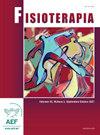物理治疗对更年期泌尿生殖系统综合症的疗效:系统综述
Q4 Health Professions
引用次数: 0
摘要
背景和目的绝经期泌尿系统综合征(GSM)是绝经后妇女的一种渐进性常见病。本研究旨在描述物理疗法在控制 GSM 症状(包括尿失禁、性功能障碍和疼痛)方面的有效性和安全性。检索词包括 "更年期"、"更年期泌尿生殖系统综合征"、"物理治疗 "和 "盆底"。结果 共纳入了 19 项研究,其中大部分研究的方法学质量较高,推荐等级为 1+。研究确定了三种主要治疗策略:教育、治疗性运动(尤其是盆底肌肉训练)和射频治疗。结论:物理治疗是一种有效、安全的治疗方法,可用于控制 GSM,潜在地改善绝经后妇女的泌尿和外阴症状,以及生活质量和性功能。要确定具体的治疗策略和最佳剂量,还需要进行样本量充足的进一步研究。本文章由计算机程序翻译,如有差异,请以英文原文为准。
Eficacia del tratamiento de fisioterapia en el síndrome genitourinario de la menopausia: revisión sistemática
Background and objective
Genitourinary Syndrome of Menopause (GSM) is a progressive and prevalent condition in postmenopausal women. This study aims to describe the efficacy and safety of physiotherapy in managing GSM symptoms, including urinary incontinence, sexual dysfunction, and pain.
Materials and methods
A peer-reviewed systematic review was conducted using the PubMed, Cochrane, PEDro, Web of Science, and Lilacs databases. The search terms included «menopause», «genitourinary syndrome of menopause», «physiotherapy», and «pelvic floor». Randomized controlled trials were selected, and methodological quality was assessed using the PEDro scale, while levels of evidence and recommendation grades were determined according to the SIGN scale.
Results
A total of 19 studies were included, most of which demonstrated high methodological quality and a recommendation grade of 1+. Three main treatment strategies were identified: education, therapeutic exercise—particularly pelvic floor muscle training—and radiofrequency. Improvements were observed in quality of life, reduction of urinary symptoms, enhancement of sexual function, overall satisfaction, and pelvic floor muscle strength, with no reported adverse effects.
Conclusions
Physiotherapy is an effective and safe treatment for managing GSM, potentially improving urinary and vulvovaginal symptoms, as well as the quality of life and sexual function of postmenopausal women. Further studies with adequate sample sizes are needed to define specific treatment strategies and optimal dosing.
求助全文
通过发布文献求助,成功后即可免费获取论文全文。
去求助
来源期刊

Fisioterapia
Health Professions-Physical Therapy, Sports Therapy and Rehabilitation
CiteScore
0.50
自引率
0.00%
发文量
37
期刊介绍:
Publicación Oficial de la Sociedad Española de Fisioterapeutas. Sus páginas ofrecen desde artículos originales hasta revisiones, pasando por el estudio de casos o los actos más importantes relacionados con la especialidad.
 求助内容:
求助内容: 应助结果提醒方式:
应助结果提醒方式:


